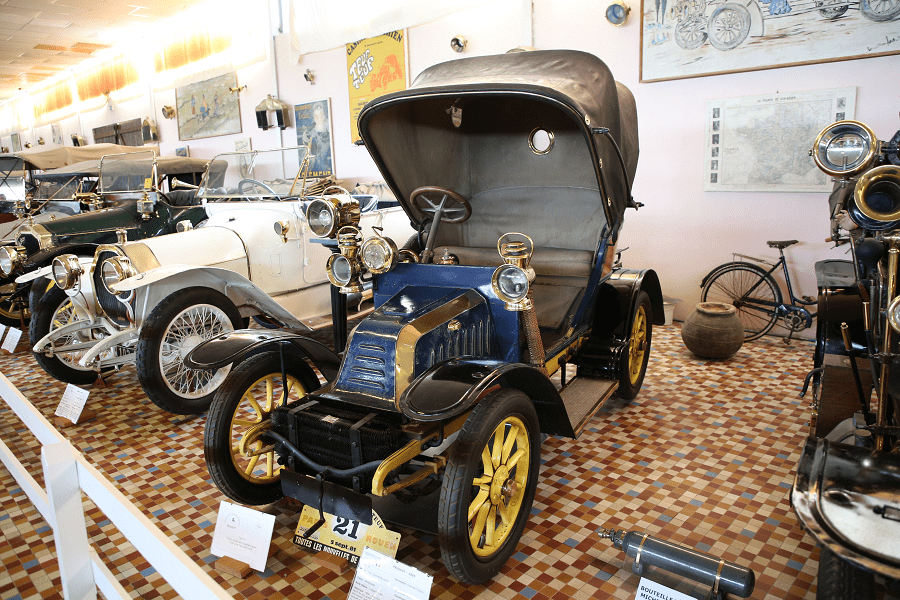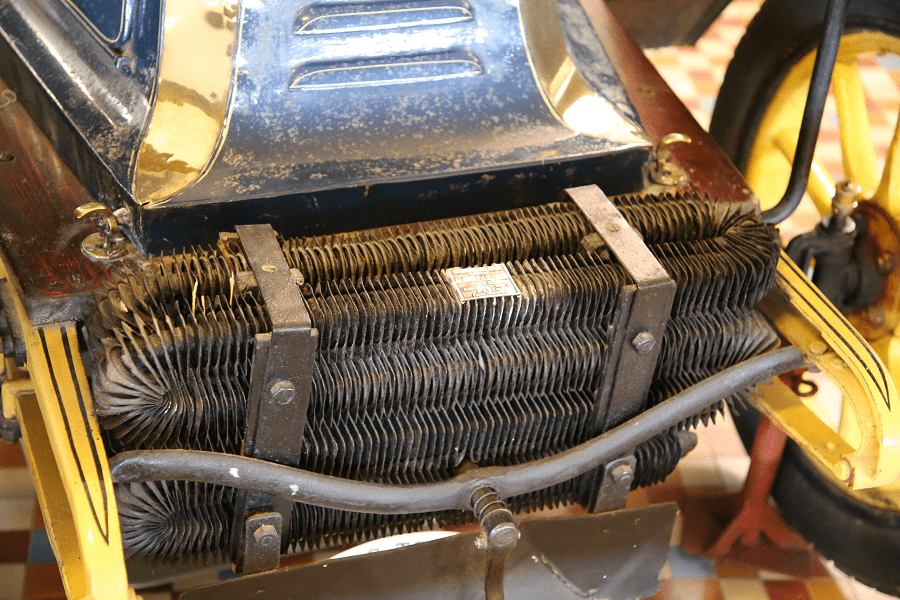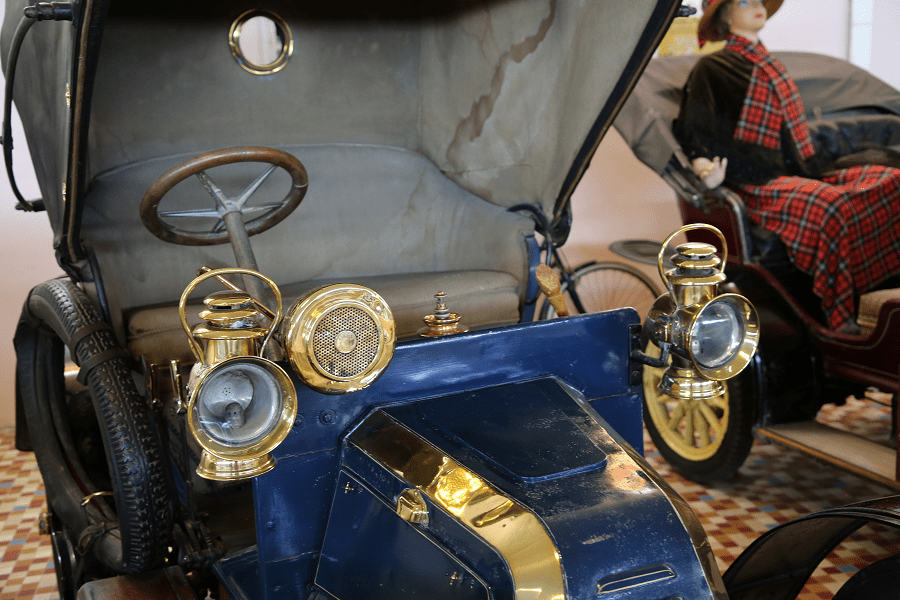Blue Peugeot VA from 1905 with one cylinder (652 cc). Max. speed: 40 km/h
The Lion-Peugeot Type VA is an early motor car produced near Valentigney by the French auto-maker Lion-Peugeot between 1907 and 1908.
First presented at the Paris Motor Show in 1905, but not offered for sale until the next year, the Type VA was the first of a succession of models to carry the “Lion-Peugeot” name.
The car was propelled using a single cylinder 785 cm³ four stroke engine, mounted ahead of the driver. A maximum of between 6 and 7 hp of power was delivered to the rear wheels, and a top speed of 35 km/h (22 mph) was claimed.
The Type VA was 2,850 mm long, with a wheel-base of 2,000 mm. A carriage format Voiturette body provided space for two while the covered carriage Tonneau / Phaeton format body offered space for four.
The Peugeot family had a long tradition of manufacturing steel components and mechanisms. The car appears to have featured a simple but efficient design, and the manufacturer was able to price the first Lion-Peugeot competitively.
Volumes were, by the standards of the time, correspondingly high, and approximately 1,000 of the cars were produced between 1906 and 1908. This made the Lion-Peugeot Type VA the first car carrying the “Peugeot” name to reach 1,000 units. This also appears to have put the car ahead of Peugeot’s own Peugeot Bébé model at the time, although the Bébé, in a succession of versions, would remain in production until 1916 and ultimately top 3,000 sales.
Lion-Peugeot and Peugeot: the difference
“Lion-Peugeot” is the name under which in 1906 Robert Peugeot and his two brothers, independently of their cousin Armand’s “Automobiles Peugeot” company, established a car manufacturing business at Beaulieu near Vallentigny. Ten years earlier the automobile pioneer Armand Peugeot had split away from the family business after a long-standing disagreement over how intensively the company should diversify into larger scale automobile production.














